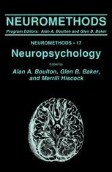Search
Search Results
-
Superinfection by Listeria monocytogenes of cultured human enterocyte-like cells infected with poliovirus or rotavirus
A mixed infection with either rotavirus or poliovirus and Listeria monocytogenes was analysed in Caco-2 cells, a tumour-derived cell line, highly...
-
Toxicity of fungicides containing ethylene-bis-dithiocarbamate in serumless dissociated mesencephalic-striatal primary coculture
Agricultural exposure to the organomanganese fungicide MANEB (manganese-ethylene-bis-dithiocarbamate) may induce an extrapyramidal syndrome...
-
Cancer risk and oxidative DNA damage in man
In living cells reactive oxygen species (ROS) are formed continuously as a consequence of metabolic and other biochemical reactions as well as...
-
Studies of Diagnosis and Pathogenesis of Wilson’s Disease
We have studied the copper and metallothionein (MT) atin culture skin fibroblasts of patients and heterozygotes with Wilson’s disease (WD) and...
-
An Integrated Map of Human Chromosome 13 Allowing Regional Localization of Genetic Markers
37 CA repeats, 5 STSs, 9 ESTs, and 4 genes were mapped to 19 different intervals of chromosome 13 determined by the cytogenetic breakpoints of 19...

-
Unusual Forms of Dementia
Other chapters in this volume have analysed the common types of dementia, such as Alzheimer’s disease, vascular dementia, diffuse Lewy body disease,...
-
Endangered Species Spermatozoa: Diversity, Research, and Conservation
The global explosion in human population has placed extraordinary pressures on the earth’s resources. The result has been a rate of species...
-
Developmental Neuropsychological Assessment
Historically, the clinical discipline of neuropsychology evolved primarily for the purpose of evaluating the effects of brain damage in adults....
-
Influence of Triethylenetetramine and D-Penicillamine on Zinc Metabolism in Mice
Triethylenetetramine (TETA) is a copper chelator used in the treatment of Wilson’s disease. It is applied primarily to patients with adverse...
-
Lipid Parameters in Wilson’s Disease Patients on Zinc Therapy
While the relationship of zinc and copper nutriture to cardiovascular health was hypothesized by Klevay some time ago (1973), only a small amount of...
-
Neonatal and Adult 64Copper Metabolism in the Pig and Its Relationship to Copper Metabolism in Wilson’s Disease
The copper profiles of the neonatal mammals including man are indistinguishable from Wilson’s disease ie. high liver copper, low plasma copper and...
-
Metallothionein and Copper in Human Liver — A Histopathological Study
Levels of copper above 55 ug/G dry weight in adult human liver are considered to be abnormal and may be associated with liver cell damage. In primary...
-
Side-effects of penicillamine: some recent aspects
Reports of adverse reactions to penicillamine multiplied in the years immediately after it began to be widely prescribed as an antirheumatoid...
-
Electrical Stimulation in Human of the Sensory Thalamic Nuclei and Effects on Dyskinesias and Spasticity
Electrical stimulation of the diencephalon for localization purposes has been performed since the earliest use of stereotactic procedures to treat...
-
Can We Cure Genetic Disorders?
The question posed in this chapter—namely, “Can we cure genetic disorders?”—is straightforward. The answer is anything but simple, the best answer,...
-
The effects of penicillamine and other thiols on lymphoid cells
D-Penicillamine (D-PAm,)3,β-dimethyl-D-cysteine) is now widely used to treat rheumatoid arthritis (Hill, 1977). Although its efficacy in inducing...
-
Biochemistry of Middle and Late Life Dementias
The disease entities to be considered in this review are characterized clinically by a slow but relentless deterioration of intellectual faculties...
